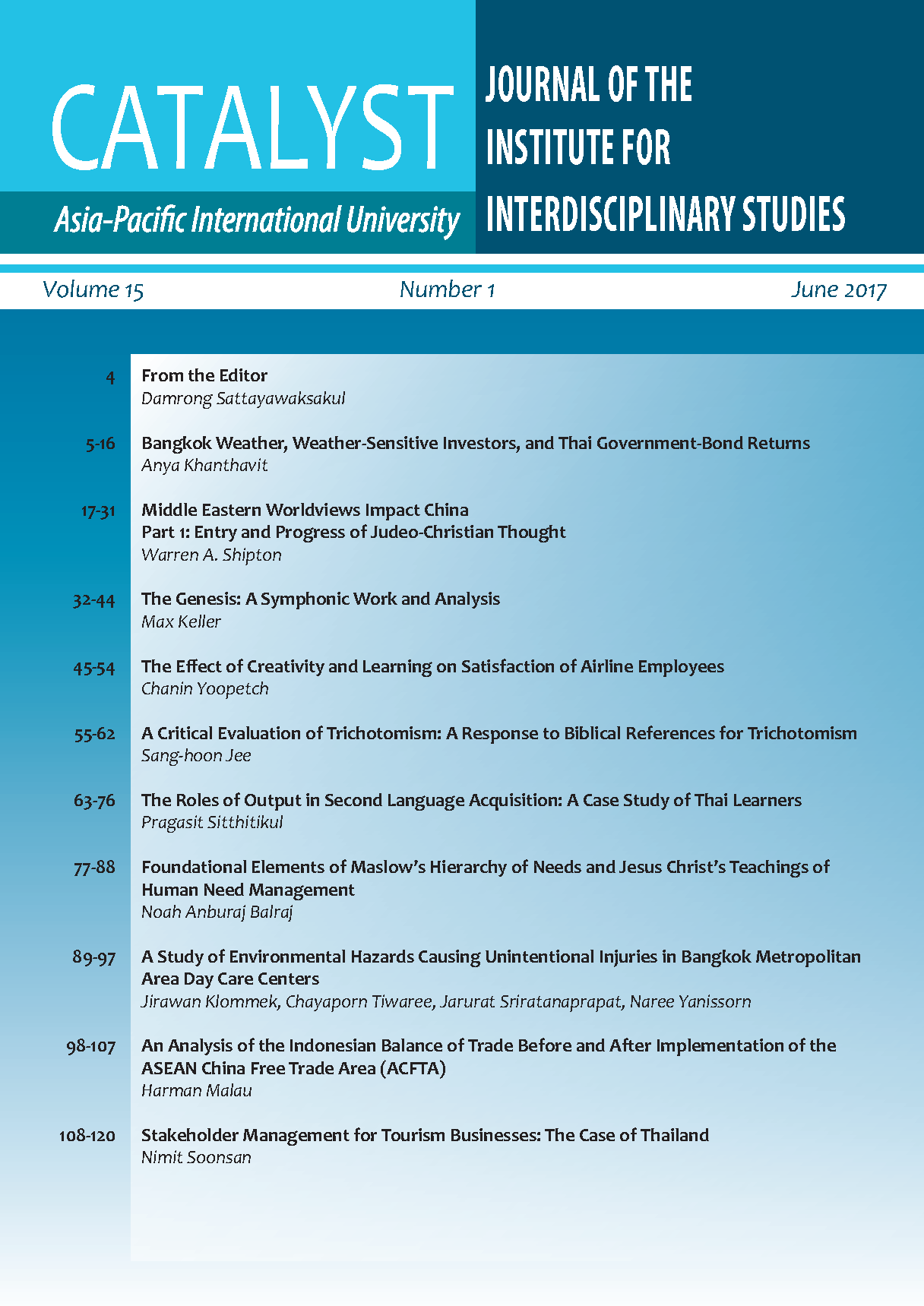The Genesis: A Symphonic Work and Analysis
Main Article Content
Abstract
The biblical account of creation found in the Book of Genesis is known to billions around the world through its proclamation by multiple religions and numerous denominations. As such it is embedded in many cultures, especially that of the Western civilization and art. This article contains all but two of the movements, three and six, of Max Keller’s analysis of his multi-movement symphonic work The Genesis. The work sought to be a musical expression of the creation narrative found in the Book of Genesis, with direct correlations to the original Hebrew text. As such, the analysis takes an in-depth look into the relationship between the composition itself and the text, with specific attention given to the translations of the original Hebrew into English to better understand the reasoning behind the interpretative choices made by the composer and how they are applied musically.
Article Details

This work is licensed under a Creative Commons Attribution-NonCommercial-NoDerivatives 4.0 International License.
Copyright: Asia-Pacific International University reserve exclusive rights to publish, reproduce and distribute the manuscript and all contents therein.
References
Anthony, J. (1974). French Baroque Music from Beaujoyeulx to Rameau. New York: B. T. Batsford.
Baptisa, L. (2000, June 15). Luis F. Baptista; Ornithologist Mastered the Dialects of Birds. (M. OLIVER, Interviewer) Los Angeles Times.
Brown, A. P. (1989). Haydn's Chaos: Genesis and genre. The Musical Quarterly, 73(1), 18-59.
Cage, J. (1968). Defense of Satie. In R. Kostelanetz, & R. Kostelanetz (Ed.), John Cage. New York: Praeger.
Cage, J. (1978). Experimental Music. In Silence: Lectures and Writings (pp. 7-8). Marion Boyars.
Dolan, E. I. (2013). The Orchestral Revolution: Haydn and the Technologies of Timbre. New York: Cambridge University Press.
Edwards, F. G. (1891, June 1). First Performances. II. Haydn's "Creation". The Musical Times and Singing Class Circular, 32(580), 330-332.
Johnson, J. W. (1922). The Creation. In J. W. Johnson, The Book of American Negro Poetry. Public Domain.
Katz, J. (2009, April 9). The Measure of Genius: Michelangelo’s Sistine Chapel at 500. Retrieved July 6, 2016, from smithsonianmag.com: https://www.smithsonianmag.com/arts-culture/themeasure-of-genius-michelangelos-sistine-chapel-at-500-123313873/?no-ist Keller, M. (2016). The Genesis.
King James VI and I . (1611). Genesis. In King James Version. Public Domain.
Kramer, R. (2012). Unfinished Music. Oxford, New York: Oxford University Press.
Luz, U. (2010). Why do Theologian Speak about God when they Speak about Humans? In K. Z. Tobias Nicklas (Ed.), Theologies of Creation in Early Judaism and Ancient Christianity: In Honour of Hans Klein (Vol. 6 of Deuterocanonical and Cognate Literature Studies). Walter de Gruyter.
Merriam-Webster. (2016, October 5). Music. Retrieved from https://www.merriamwebster.com/dictionary/music
Milton, J. (1667). Paradise Lost. Public Domain.
Picoult, J. (1992). Songs of the Humpback Whale. New York: Pocket Books.
Reisner, N. (2011). John Milton's 'Paradise Lost': A Reading Guide. Edinburgh University Press.
Rodríguez , Á. M. (1999, 10 14). Materials: by Ángel Manuel Rodríguez - Retired. Retrieved 10 2016, from adventistbiblicalresearch.org: https://adventistbiblicalresearch.org/sites/default/files/pdf/whatsupthere.pdf
Snook, P. A. (n.d.). Andrei Petrov: The Master And Margarita. Retrieved July 6, 2016, from arkivmusic.com: https://www.arkivmusic.com/classical/Drilldown;jsessionid=6474FF24FE2DEEFFC4209399321E 677B?name_id1=170127&name_role1=1&bcorder=1&comp_id=395948
Strong, J. (1890). Strong's Concordance with Hebrew and Greek Lexicon. Abingdon Press. Retrieved from https://biblehub.com/hebrew/
Temperley, N. (1991). Haydn: The Creation. Cambridge: Cambridge University Press.


